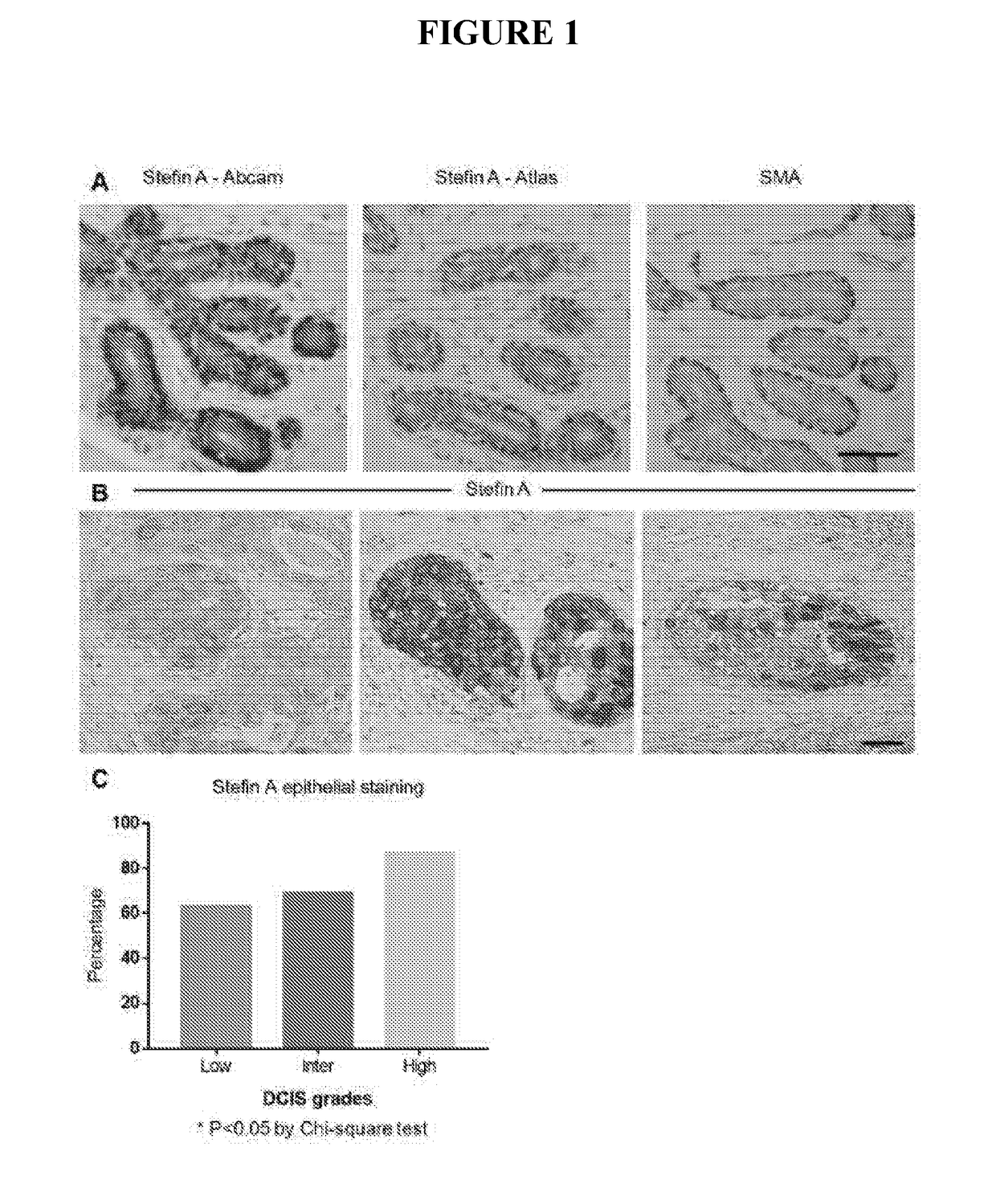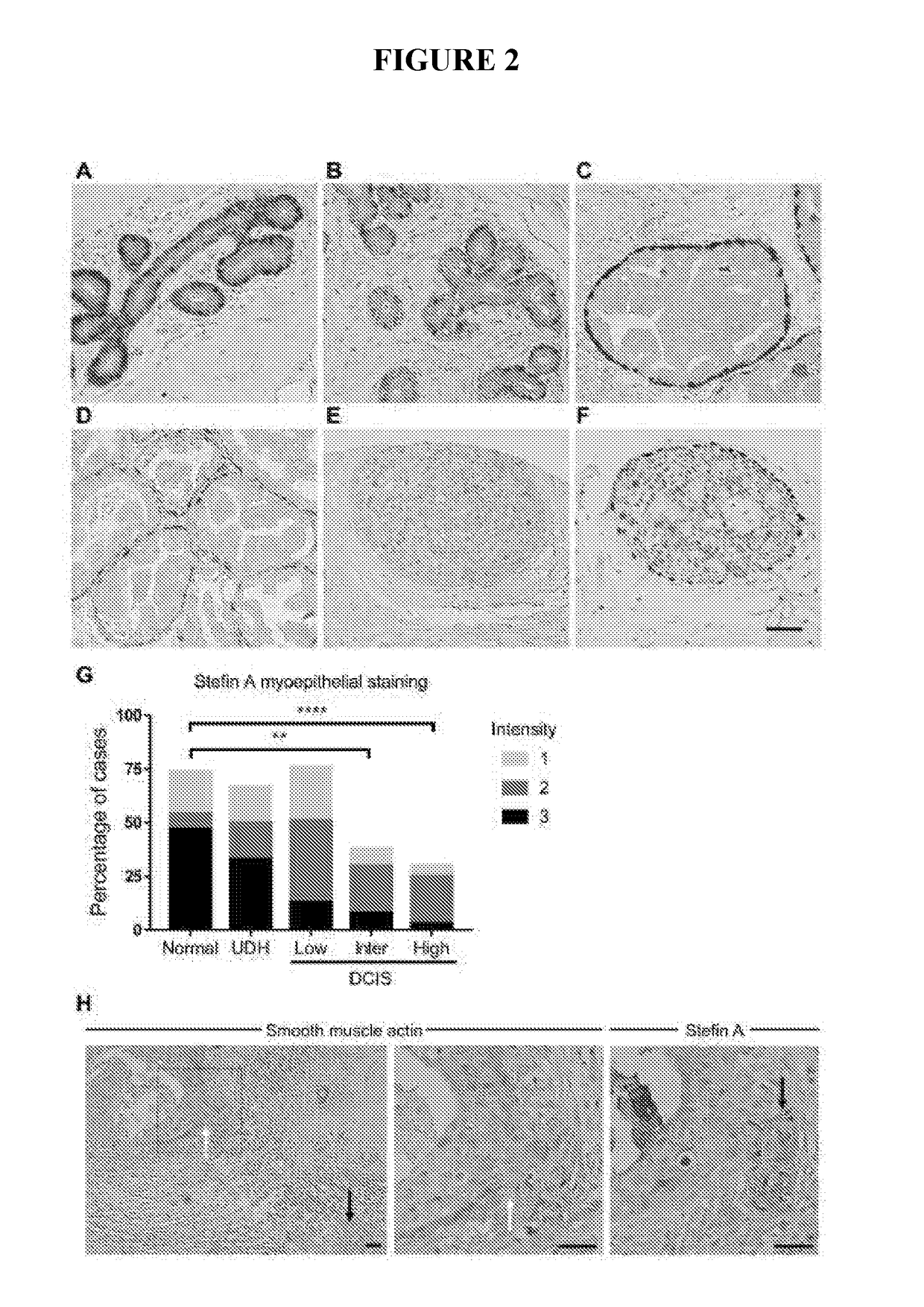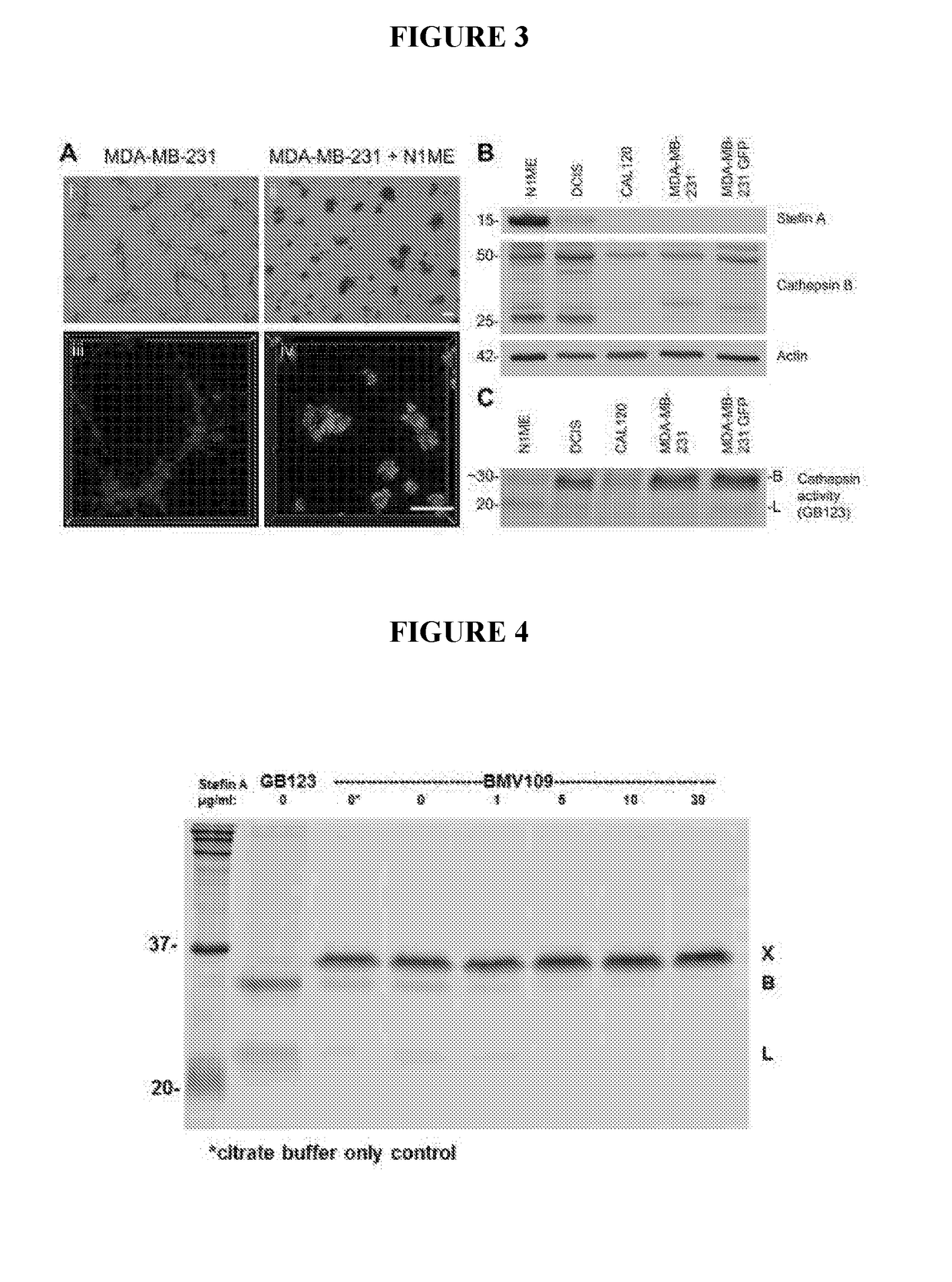Method of diagnosis
a diagnostic method and a technology of stefin a, applied in the field of diagnostic methods, can solve the problems of inconclusive clinical management of dcis patients, and inability to accurately predict which patients will develop invasive cancer, etc., to achieve the effect of increasing the activity of cathepsin protease, increasing the risk of neoplasia progression, and decreasing the expression of stefin
- Summary
- Abstract
- Description
- Claims
- Application Information
AI Technical Summary
Benefits of technology
Problems solved by technology
Method used
Image
Examples
example 1
[0174]Analysis of Stefin A expression in a cohort of 200 patient samples spanning normal, hyperplasia and low, intermediate and high grade DCIS lesions has revealed that the expression of Stefin A is significantly reduced with increasing DCIS grade. The loss of Stefin A in high grade DCIS lesions, those more likely to progress to invasive carcinoma, indicates that myoepithelial Stefin A suppresses the DCIS to invasive carcinoma transition. In summary a 3D culture system has been used to test this, as described below
[0175]Method and Materials
Immunohistochemistry (IHC)
[0176]For human tissues, normal breast sections and primary breast carcinoma samples were obtained from Sandra O'Toole at the Royal Prince Alfred Hospital (RPAH) either as full-faced slides (for the micro-invasive carcinoma) or in a tissue microarray (TMA) (Zardawi et al.). The use of archived human tissues was approved by the HREC of RPAH (approval number X15-0388 (SSA / 16 / RPAH / 397)). Sections (formalin-fixed, paraffin e...
example 2
Recurrence of Invasive Cancer
[0214]Samples were surgically resected from pre-invasive lesions (DCIS) from 3 patients in 1997, 2004 and 2001 respectively (Identified as Patient 1997, Patient 2004 and Patient 2001) and the samples were archived. These patients were subsequently followed up clinically over 10 years.
[0215]The archived samples of Patient 1997, Patient 2004 and Patient 2001 were subsequently analysed for Stefin A (FIG. 14). Staining of Stefin A was carried out as previously described (Immunohistochemistry (IHC)). Patient 1997 and 2004 showed low to no staining of Stefin A and later developed a clinically diagnosed invasive neoplastic lesion, confirmed by methods such as mammogram and core biopsy.
[0216]In contrast, the archived sample of Patient 2001 displays normal levels of Stefin A. Patient 2001 has had annual follow up for approximately 10 years and has no recurrence of breast cancer.
PUM
| Property | Measurement | Unit |
|---|---|---|
| temperature | aaaaa | aaaaa |
| pH | aaaaa | aaaaa |
| pH | aaaaa | aaaaa |
Abstract
Description
Claims
Application Information
 Login to View More
Login to View More - R&D
- Intellectual Property
- Life Sciences
- Materials
- Tech Scout
- Unparalleled Data Quality
- Higher Quality Content
- 60% Fewer Hallucinations
Browse by: Latest US Patents, China's latest patents, Technical Efficacy Thesaurus, Application Domain, Technology Topic, Popular Technical Reports.
© 2025 PatSnap. All rights reserved.Legal|Privacy policy|Modern Slavery Act Transparency Statement|Sitemap|About US| Contact US: help@patsnap.com



